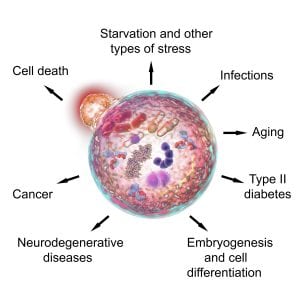I found it! I found the one thing vegans, vegetarians, carnivores, paleo and keto enthusiasts can all agree with.
Fasting is possibly the most important intervention for longevity. The science supports it, and now it is gaining popularity among the masses.
Yet the question remains, how do we best accomplish fasting? What’s the best duration, frequency, and does it have to be a complete water fast? Or can it be a calorie restricted fasting mimicking diet (FMD)?
Just when I thought I found a consensus; the details rear their ugly heads to divide us once again. But there is hope! The hope comes from realizing that there is more than one way to accomplish a goal.

Some would say you can accomplish the key to longevity with drugs like metformin, others say time restricted eating is the way to go. All of those have tremendous potential, but when it comes to science backed interventions, longer term calorie restriction takes the cake (sorry for the pun).
Even though it is challenging to perform, long term trials with calories restriction in humans, the consensus is clear- some version of calorie restriction helps us live healthier. Calorie restriction increases autophagy, lowers stimulation of key nutrient sensors and growth factors like IGF-1, mtorc1 and AMPK, improves insulin and glucose sensitivity, and more.
But who wants to live their life restricting their calories all the time? That is a miserable way to live. Therein lies the power of intermittent fasting. We don’t have the exact methodology down to a science, but it seems that a five day fast 2-3 times per year can have significant health benefits. Now that is something people can do without being miserable!
Even then, however, fasting is challenging. Personally, I have a hard time getting past day 3 in a water-only fast and have noticed the same in a number of my Boundless Health Program clients. Then I found the Fasting Mimicking Diet from L-Nutra.
They made fasting easy (at least easier)! In brief, for $250 they send you five boxes each with everything you will eat for the day. Day 1 is about 1,000 calories and days 2-5 are around 700 calories. It is a mix of bars, soups, olives, crackers and a glycerin-based drink in addition to a daily vitamin supplement. It is all veggie and nut based, low protein, and fairly palatable as far as processed and packaged “food” goes.
And here is the best part. It is backed by research. Valter Longo, one of the world’s leading longevity researchers, happens to be one of the company cofounders. They have peer-reviewed studies demonstrating decreased IGF-1, improved insulin sensitivity, improved CVD risk factors, and possibly the biggest benefit of all with improved stem cell regeneration.
Science backed, convenient, and potential for improved longevity? I was sold and knew I had to try it. Here are some of my take home lessons from the Five-Day Fasting Mimicking Diet.
- Overall I had a positive experience, but I am quick to admit that this isn’t the “best” way to fast. If you can safely do a water only fast for five days, go for it! It’s much cheaper and has all the benefits without any question. Just make sure you are doing it safely, preferably under the guidance of your healthcare provider or experts such as those at IDMProgram.com.
- You can do your own fasting mimicking diet. I didn’t love how the food was processed, packaged food-like-products. In fact, it freaked out my kids that I was eating packaged food from a box. They have probably never seen me do that before, and they have heard me denounce such fake food for years. You should have seen their faces when I sat down to dinner with my box of “food”! If you have the time and energy, you could likely recreate this program with real food.
- ProlonMD is the most convenient way to go. Once I got past the processed nature of it, I realized: What could be easier than simply opening the box and knowing exactly what you are eating for the day? No preparing, no planning, no shopping. This is the biggest benefit to L-Nutra’s program. I loved the convenience. It made it easy to stick with and easy to implement.
- Day one was a breeze. The novelty, the excitement of the experiment, plus 1,000 calories made it easy with minimal hunger or cravings. The bar is tasty (although a little sweet for me), I love the olives, the soups are palatable, and the kale crackers are pretty tasty too.
- Day two was still pretty easy. The novelty was still there, hunger increased a little but was completely manageable. Since I had started already in ketosis, I found I quickly went deeper into ketosis and noticed improved focus and thinking, and my energy level was still great. Plus, I slept much deeper starting day two.
- Day three was the toughest. Just as it is for me with water fasts, day three is the big hurdle. But it was a much smaller hurdle since I still had some calorie intake. The novelty was wearing off at this point and I was tiring of the processed food. Watching my family eat scrambled eggs, veggies and avocado for dinner made me crave real food! I knew for maximal benefit I had to charge through, and thus I was motivated to continue.
- Day four was pretty easy once again. I was deeper in ketosis, my hunger abated, and I knew the toughest part was behind me. I even went to the gym and felt pretty good lifting (at about 80% intensity).
- Day five was again easy during the day, but that evening I was done. It wasn’t that I was overly hungry or tired, I just missed real food! Watching my family eat real veggies, real salmon, real avocado, real nuts… I didn’t want to do it any longer!!! But I only had 12 hours to go so I hung in there.
- Day six was the refeeding day, and I took it easy and gradual and had no trouble. I did try to go for a mountain bike ride with my usual weekend crew and they kicked my tail feathers! They all thought I was crazy to come out considering my caloric restriction, and they were right. But I am glad I tried, and I’ll be back next week to show them who is boss!
- We have a complicated relationship with food- The taste, the texture, the enjoyment, the anticipation, and the disappointment are such strong feelings and connect to so many emotions. It’s clear that what we eat is only part of the equation. Why we eat is a much stronger and more difficult issue to understand. I am a big proponent of everyone doing a five day fast or FMD simply for the psychological awareness that results.
- Our portion sizes are out of control- Really! They are seriously out of control. I pride myself in having already known that and taken steps to make sure my portion sizes are controlled. But eating the tiny portions in the FMD and not being that hungry when I was done brought this in to a whole new light. I have heard it and said it many times. We should eat until we are 80% full and then stop. After doing the FMD, I think we should stop when 60% full. I know that is near impossible to feel and measure, but the point is the same. We need to drastically cut our portion sizes down, get rid of the multiple serving buffet, and understand that we will be just fine with the smaller portions.
- Hunger is relative- Anyone who practices time restricted eating and short fasts knows that hunger is a feeling we can easily tolerate. Five days of calorie restriction highlights that point even more. We don’t need to reach for snacks every time we feel a pang of hunger. Rather, we can still perform at high mental levels despite mild hunger.
- Ketosis is awesome– I have been in ketosis for the better part of a few years, and consistently in ketosis for at least six months, so I went into this experiment thinking I would not get much benefit from the ketosis part of the FMD. But the FMD brought me even further into ketosis, to levels I haven’t achieved on my own. And I felt it. I was hyper-focused, I slept like a baby, and I simply felt sharper. That has encouraged me to find ways to intermittently go deeper into ketosis to get those benefits on a more regular basis.
- Athletic performance is better than therapy– The one part that kind of stunk with the calorie restriction was the hit my athletic performance took. The humbling mountain bike ride with my friends was a stark reality check. It was completely expected, but it still hurt. It highlighted for me the psychological importance of feeling great, performing well, and pushing my physical limits. It’s better than therapy. I love it. I thrive off it. And I hate it when I don’t get it. I am now more thankful than ever for my physical abilities, and you can bet I am going to kick @$$ next time I ride with my buddies. They better watch out (I hope they don’t read this)!
- We can do anything when there is a clear start and stop day– Overall the fasting mimicking diet was not that difficult. That being said, there were definitely a few tough times when I wanted to break it. Knowing that it would only last five days, and I only had to do it 2-3 times per year made it much easier to tolerate. Temporary pain is much easier than pain without an end.
Have you tried a fasting mimicking diet? If so, please comment with your experience and what your protocol was. I am searching for the most convenient way to help my Boundless Health Program clients succeed with their intermittent fasts and experience the biggest benefit. The ProlonMD FMD is one easy way to do this, but it is not the only way to do it.
Thanks for reading.
Bret Scher, MD FACC

from Weight Loss Insider https://ift.tt/2RtPrV6
via Best Weight Loss Supplement
0 comments:
Post a Comment